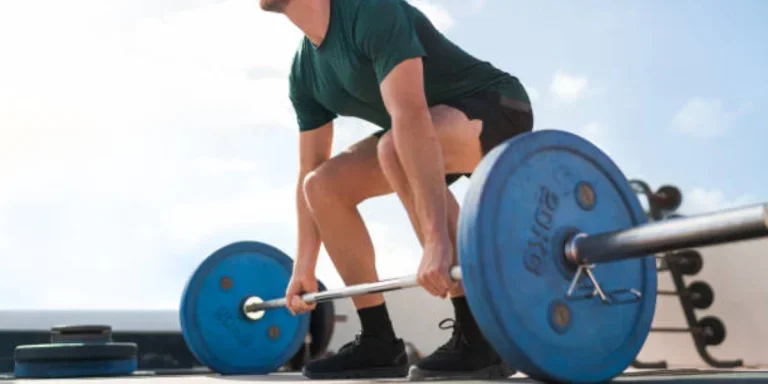With weightlifting, safety is key, which is why barbell collars are such a crucial accessory. These collars keep the weights on the barbell firmly in place in order to prevent injuries and ensure there’s no unwanted movement between the plates. Barbell collars come in different forms and offer everything from durability to ease of use for consumers. Keep reading to learn which styles are the most sought-after.
Table of Contents
Global market value of the fitness equipment market
Top types of barbell collars
Conclusion
Global market value of the fitness equipment market
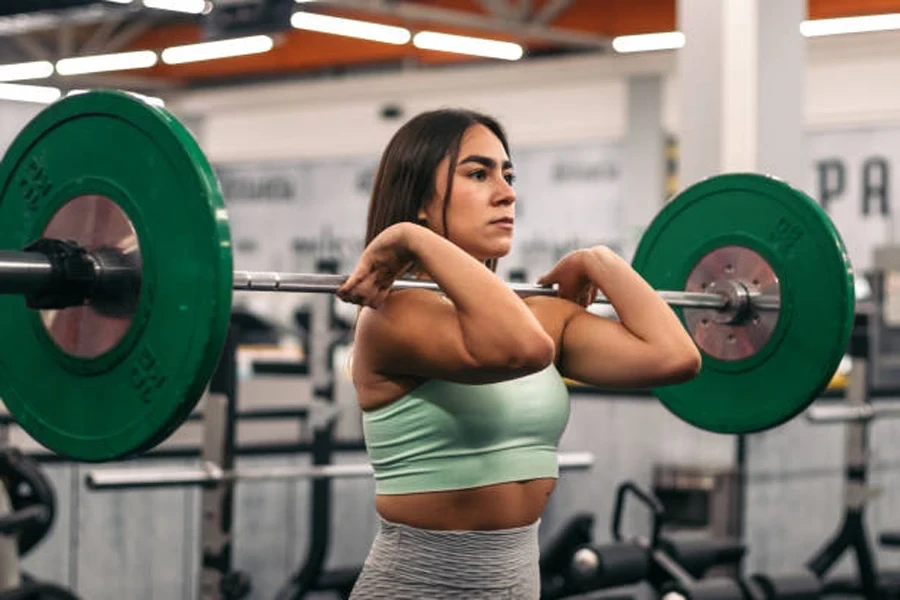
In recent years, there’s been an increase in the number of people taking part in fitness activities. This is due to a growing public awareness of the importance of a healthy lifestyle and a desire to engage various muscle groups.
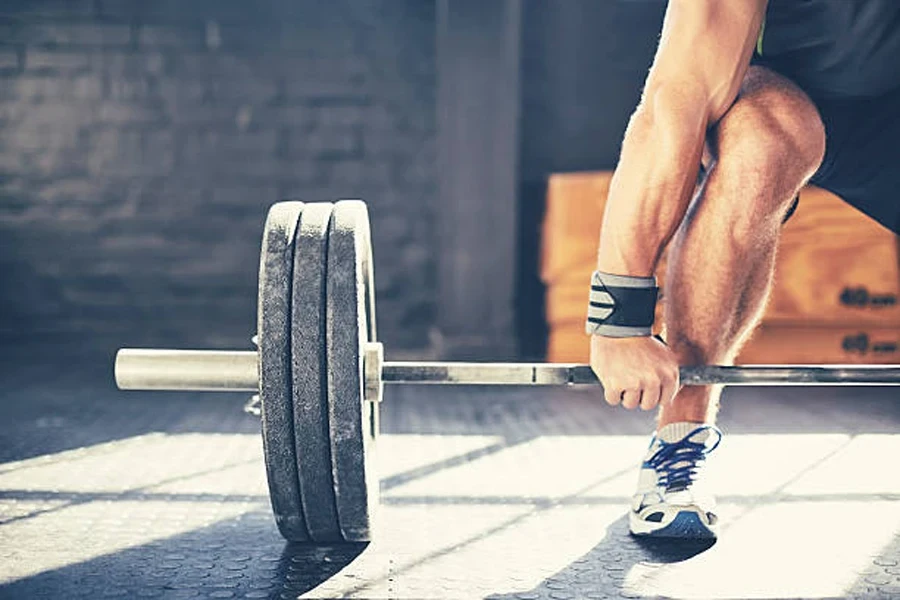
The global market value of fitness equipment, which includes products such as barbell collars, weightlifting gloves, and dumbbells, was valued at over USD 13.8 billion in 2023. This number is expected to exceed USD 20 billion by 2030, growing at a compound annual growth rate (CAGR) of 5.1% over that period.
Top types of barbell collars
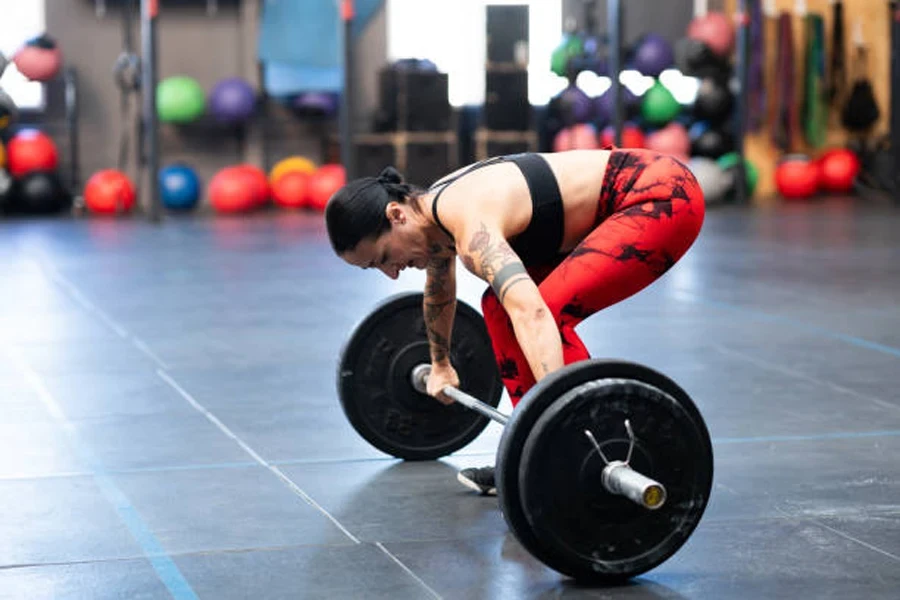
Barbell collars are designed to prevent plate movement and keep the person lifting the bar safe. They’re incredibly simple tools that can have a big impact on weightlifting sessions. But there’s more than one type available on the market, and consumers will always have a personal preference.
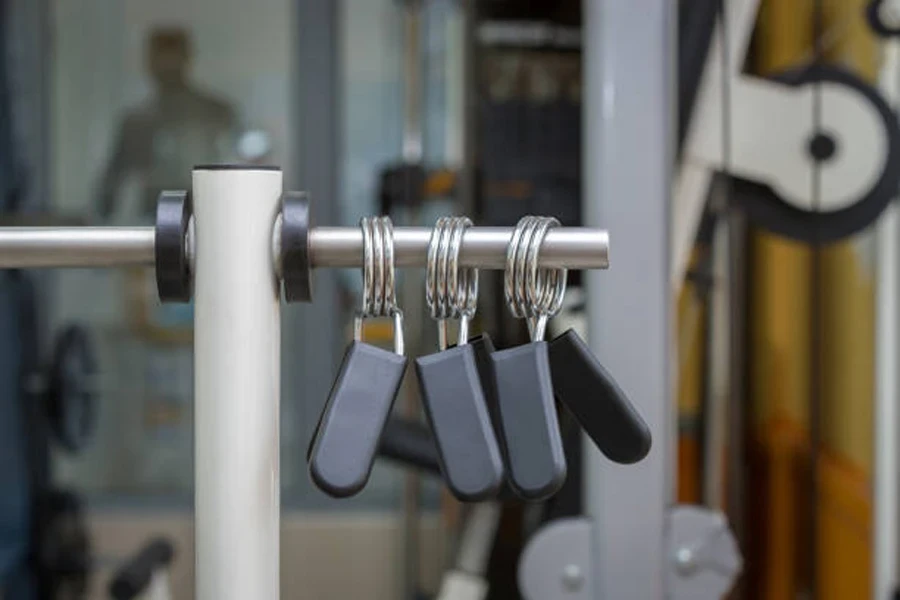
According to Google Ads, “barbell collars” has an average monthly search rate of 3,600. Searches remain relatively steady throughout the year, sitting between 2,900 and 3,600 searches. The most searches appear in April, though, at 4,400.
There are three types of barbell collars currently on the market. The most searched for is “clamp collars,” with 1,900 searches, followed by “spring collars,” with 1,000 searches, and “screw collars,” with 880 searches on average. Keep reading to find out more about each of these barbell collars.
Clamp collars
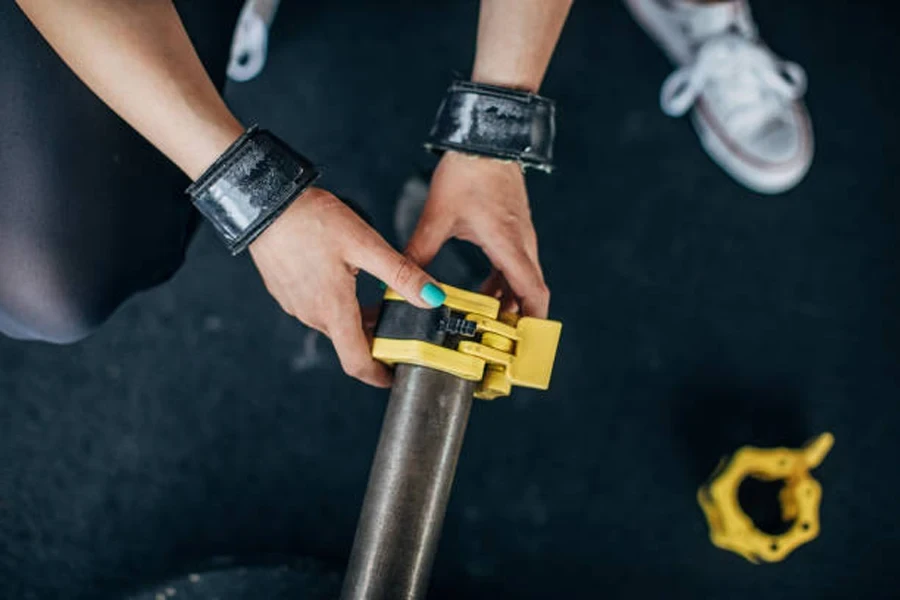
Clamp collars are the most secure type of barbell collar available. They use a locking mechanism that can be secured with one hand to allow for quick adjustments between sets. By clamping themselves around the barbell, clamp collars minimize the risk of injury and plates moving during lifts. It’s important that clamp collars are equipped with a non-slip grip on the interior to provide traction against the barbell.
These barbell collars need to be constructed with durable materials. High-strength plastic and aluminum are both popular options, as they’re able to withstand repeated use over time. They’re available in different sizes to accommodate the widths of barbells, but the most common bar is 2 inches in diameter (Olympic bars). Consumers will want clamp collars that are lightweight with a minimalist design for ease of use and security.
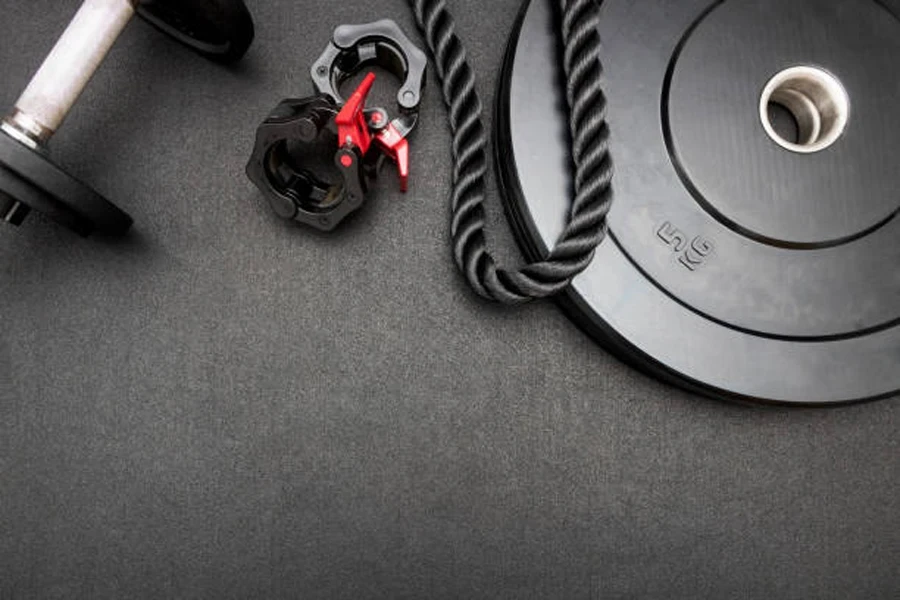
They can be used for any weightlifting activity, such as squats, deadlifts, and bench presses, where stability is key. One feature that sets clamp collars apart from other barbell collars is their quick-release functionality and rubberized grips for ease of handling. These collars are known for being inexpensive, so they are accessible to all lifters.
Clamp collars can also be used in fitness classes for narrower barbells. The collars will also need to be smaller in order to fit securely around the barbell, though. By using clamp collars, users are able to change their weights at a rapid pace while keeping up with the instructor’s routine without worrying about the plates falling off.
Spring collars
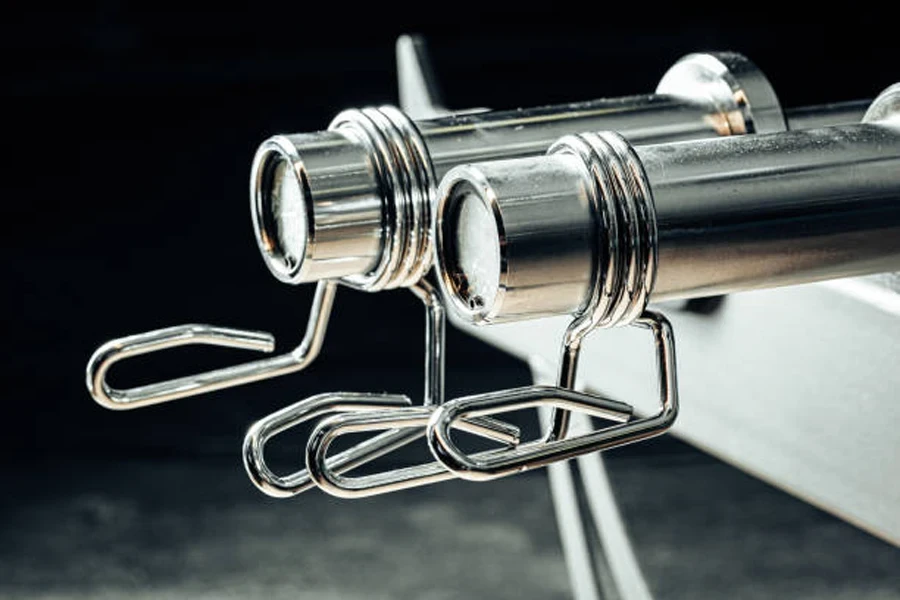
The most straightforward option for barbell collars are spring collars. They’re made of a durable metal, such as aluminum or steel, to ensure reliability during lifting. The featured spring-loaded mechanism only needs to be squeezed for the collar to open, allowing users to quickly attach and remove it from the barbell without any tension.
The spring mechanism expands as soon as it’s released, and the tension created allows for a secure fit around the barbell. This ensures that the plates slide as little as possible during different lifting routines. Spring collars are popular for all types of weightlifting activities, but they aren’t as secure as other styles, so for consumers who are lifting heavy weights, they may not be suitable.
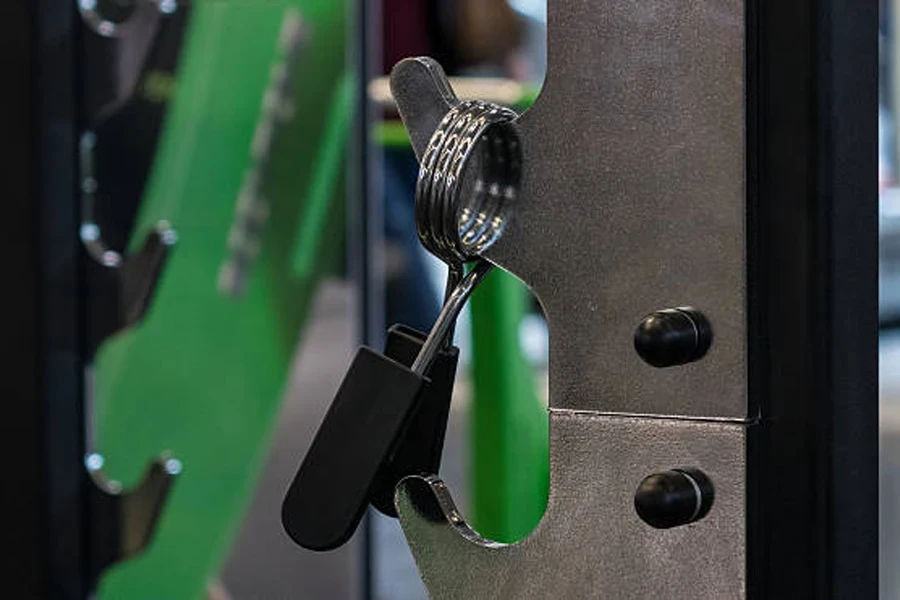
Spring collars are known for being a budget-friendly weightlifting accessory, which makes them highly accessible. They’re also very lightweight and easy to transport, meaning they are good to have for home and gym use. In terms of size, they’re commonly designed to fit around Olympic bars, but other sizes are available for other widths.
Some consumers may find spring collars difficult to open if they don’t have a lot of strength. Many spring collars are designed with textured handles that comfortably fit the user’s hand for compression purposes. These handles also reduce the risk of slippage if the hand is sweaty. Spring collars are known for their longevity and require minimal maintenance, which is why so many public gyms use them.
Screw collars
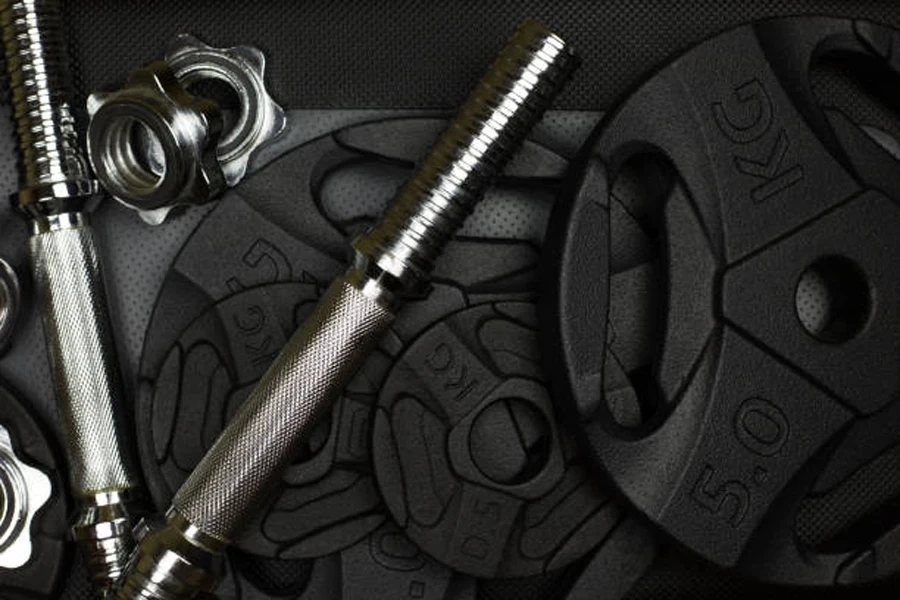
Screw collars sit in between clamp collars and spring collars in terms of security. They don’t require any additional locking mechanism and work by twisting a threaded collar onto the barbell. Some designs may feature rubber grips to make it easier for the user to twist the collar into place.
Like spring collars, screw collars are made of either aluminum or steel for strength and stability reasons. The threaded design ensures a tight fit around the barbell, even with a heavy weight set. There are different sizes available for screw collars, depending on the width of the barbell being used.
Screw collars aren’t compatible with all types of barbells, though. They need to match the threading found on the barbells in question in order to attach properly. This is why many spring collars are sold as a set with barbells.
This is a very traditional version of a barbell collar that takes longer to adjust than other types but is sometimes preferred by lifters. Consumers who want to do a quick weightlifting session will look for barbell collars that can be adjusted at a more rapid pace. Screw collars aren’t as expensive as clamp collars, but they usually cost more than spring collars, depending on the materials used.
In modern gyms, screw collars are a popular option for use in fitness studios where the barbells are much thinner and the weights are smaller. Classes such as body pump fully utilize these collars, as it’s not always necessary to change the weights at a rapid pace, but the users require a secure barbell to use in their workout routines.
Conclusion
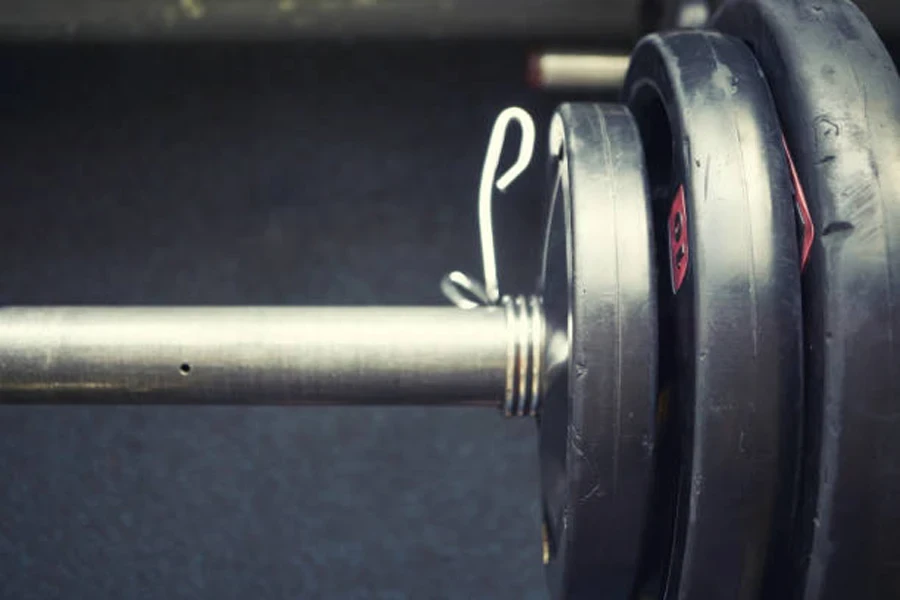
Choosing the right barbell collars is all about personal preference. Clamp, spring, and screw collars are all designed to hold the plates in place on the barbell, but they have different locking features that may be preferred by individuals. They’re all inexpensive weightlifting accessories that can be used at home as well as in gym settings, regardless of the amount of weights being lifted.
